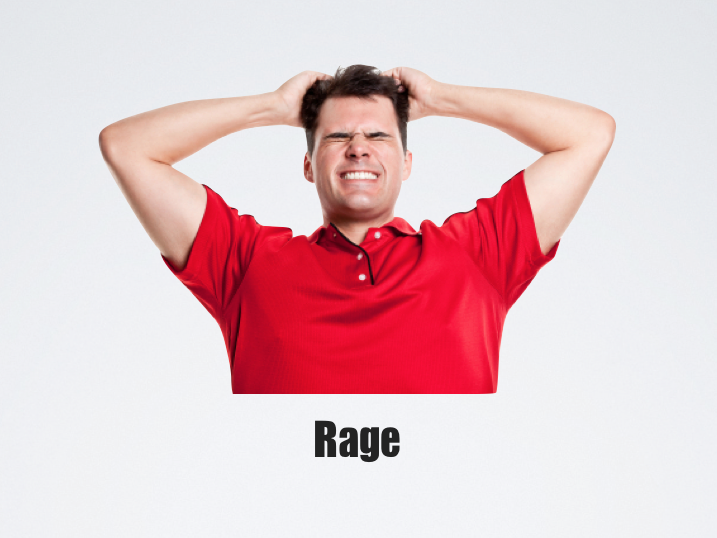
My hands shake before I talk about the darkest aspects of social injustice. When I talk about rape and intimate partner violence my throat goes dry. When I teach the topics of prejudice, discrimination, intolerance, and hate my voice becomes somber. For some of my students social injustice is something “out there” floating in the ether, but for others social injustice is something that they deal with everyday; it’s painfully real. Inequality and injustice are not simply academic ideas, but they are lived experiences. We have to teach in a way that is reverent to our students lived experiences, makes room for student anger, but guards against debilitating rage. In the third and final part of my review of Nancy Davis’s article Teaching Inequality: Student Resistance, Paralysis, and Rage1 we will explore how anger can be useful in the classroom, but how rage can be destructive.
Anger is a normal reaction to discussions of injustice and inequality, especially for students who’ve been personally negatively affected by it. When anger grows into rage it blinds students, narrows their perspective on the issue, and students begin to think about inequality in extremely reductionist ways. Davis suggests that when student become enraged and reductionist thinking takes hold,
…everything wrong in the world is attributable to patriarchy or white racism or capitalist hegemony. Men are reduced to a gender with no redeeming qualities and women are regraded as blameless in the maintenance of gender stratified societies. A blindness to the complexities of hierarchical societies and to the multiple forms that stratification takes may result.” p. 236
Enraged students may direct their anger at the nearest student from a privileged group. One male student becomes the figurehead for all that is wrong with patriarchy or a single white student comes to represent racism in it’s entirety. An enraged class is a hostile one that doesn’t allow any divergent thoughts, opinions, or worldviews to be heard. Rage is a righteous anger that assures its holder the way they see the world is accurate beyond a shadow of a doubt. An enraged student has no room for growth or learning.
Making Room for Anger, Guarding Against Rage
Given that anger is normal and a powerful motivator, good pedagogical design doesn’t try to avoid student anger, but rather it tries to use it to encourage learning. In my experience student anger is most commonly expressed by students during a large class discussion. When students want to share their firsthand experiences with injustice and inequality you have to let them be heard; you have to acknowledge that this is their lived experience and how they’ve come to understand it. Using a “two minute paper” to let your students write down their thoughts and feeling about the class discussion allows students to express and work through their feelings. Furthermore this self-reflection can lead to a great deal of learning and self-discovery.
When I’ve had a student become enraged I found that the students are typically unaware that their anger has escalated. If a class discussion gets particularly heated I will always reach out or “check in” with angry students. Typically I will email the student after class so that they have some time to cool off and they are allowed time to think about how they will respond to me. It’s not uncommon for students to reply back, “Thanks for asking, but I’m fine. I love this class and I love talking about _.” In my reply email I will tell the student how much I appreciate their honesty and passion for the topic and ask them to help me make the classroom a place where all voices can be heard. Ideally this turns a potentially volatile student into a student who is supportive to and encouraging of his or her peers.
In my classroom I work to foster an environment that is accepting of all students regardless of where they are at developmentally. Only in the social sciences do students snap on a peer for being uninformed or incorrect. Before a high risk class discussion I tell my students that if in a calculus class the professor asked, “who can tell me how to solve the problem on the board?” And a student rose their hand to incorrectly say, “I, uh, think you take the anti-derivative…?” None of their peers would turn around and say, “WHAT!?! Are you kidding? Didn’t your parents raise you right? Clearly you take the derivative. God some people are ignorant!” No, in a calculus class it’s okay to not know the answer. It’s okay to still be learning. After I tell my students this story I ask them to allow their peers to learn here and to let this room be a space for learning.
Discussing inequality is one of the most challenges aspects of teaching sociology. After reviewing Davis’s article over the last three weeks I hope that you will feel more prepared for the issues surrounding inequality when they arise in your classes.
Footnotes:
1. Davis, Nancy J. 1992. “Teaching about Inequality: Student Resistance, Paralysis, and Rage” Teaching Sociology 20(3) Pp. 232-238.

Comments